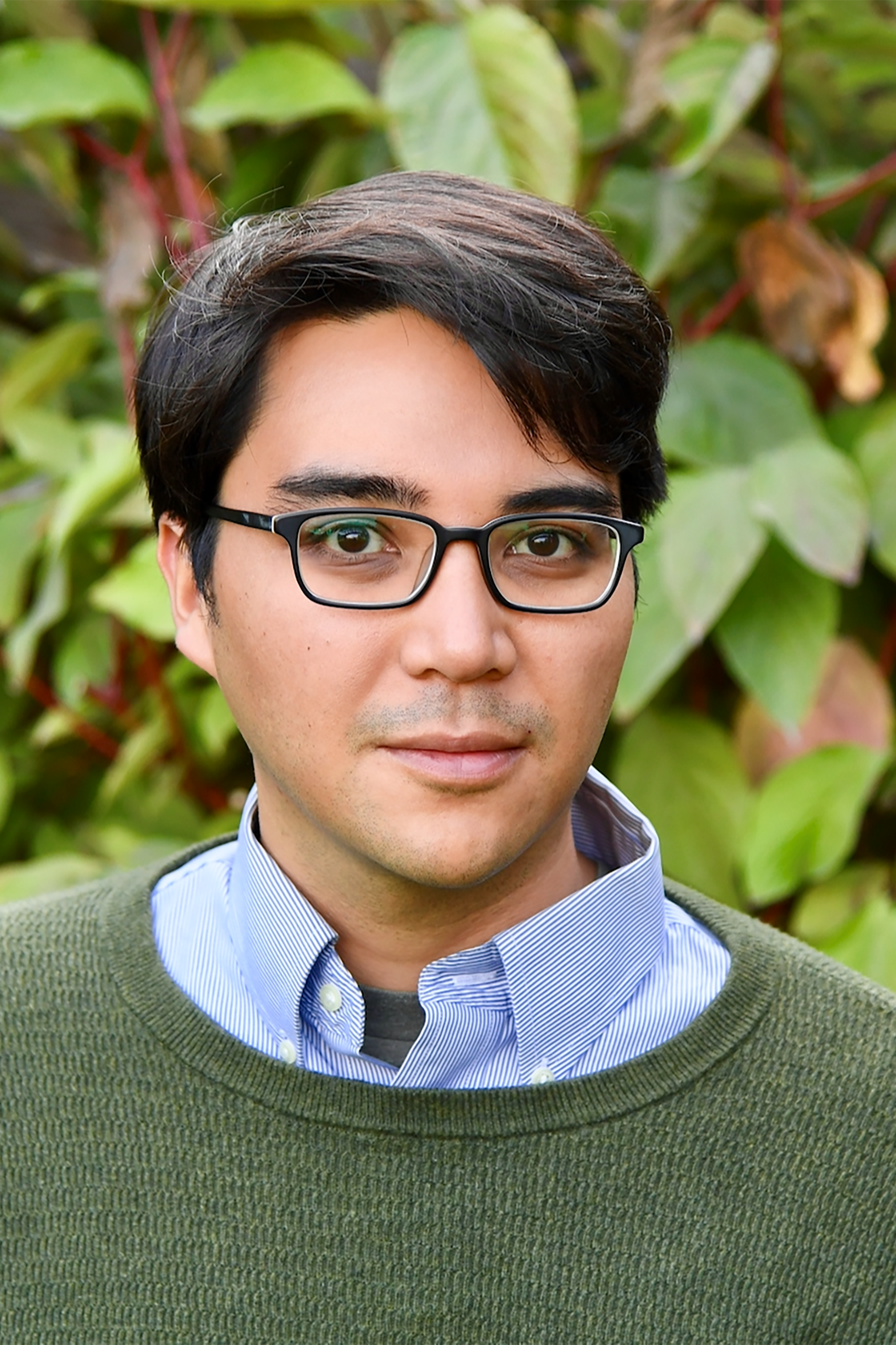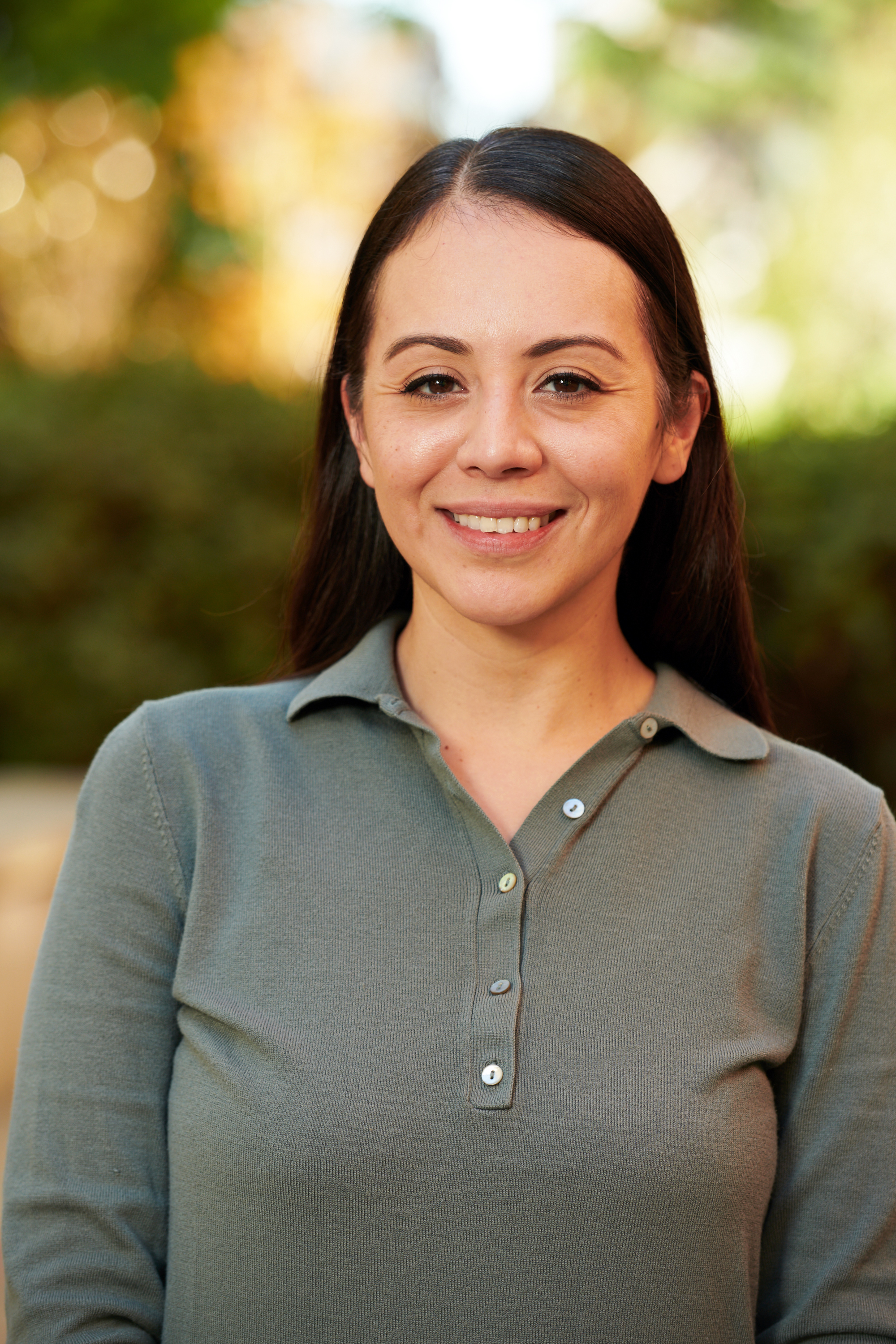Duncan Leitch
Biography
Dr. Duncan Leitch grew up in Memphis, TN. He completed undergraduate degrees in mathematics and neuroscience, followed by a PhD in systems neuroscience with Dr. Kenneth Catania (Vanderbilt University, Nashville, TN, US). His doctoral thesis focused on comparative mechanosensory neurophysiology with a particular focus on novel sensory organs in diverse vertebrates. Following grad school, he was a postdoctoral fellow at the University of California – San Francisco with Dr. David Julius, where he studied the molecular basis of the unusual sense of electroreception in elasmobranch fishes. He and colleagues identified novel mutations in voltage-gated calcium and sodium channels that mediated neural responses to low threshold electrical fields using physiological, genetic, and behaviourally analyses. His lab studies diverse sensory adaptations in vertebrates, using transcriptomic, physiological, and behavioural approaches to identify mechanisms of nervous system adaptation. These novel projects include looking at sensory system organization in diverse reptile, amphibian, and fish taxa.
Education
B.S., Mathematics, Vanderbilt University, 2006
B.S., Neuroscience, Vanderbilt University, 2006
Ph.D., Neuroscience, Vanderbilt University, 2013
Post-doctoral fellowship, UC San Francisco, 2019
Selected Publications
Leitch, D.B. and A. Gaede (2021). Specialized somatosensory systems revealed: comparative structure, function, and transduction through cutaneous receptors of the body. In J. Kaas (Ed.), The Senses: A Comprehensive Reference. Elsevier Oxford.
Leitch, D.B. and D. Julius (2019). Electrosensory transduction: comparisons across structure, afferent response properties, and cellular physiology. In B.A. Carlson and J. Sisneros (Eds.), Electroreception: Fundamental Insights from Comparative Approaches. Springer New York.
Bellono, N*, Leitch, D.B*., Julius, D.J., “Molecular tuning of electroreception in sharks and skates”, Nature, 558:122-126, 2018. Cover article.
Bellono, N*, Leitch, D.B*., Julius, D.J., “Molecular basis of ancestral vertebrate electroreception”, Nature, 543:391-396, 2017.
Leitch, D.B. and K.C. Catania. “Structure, innervation, and response properties of integumentary sensory organs in crocodilians”, J Exp Biol, 215, 4217-4230, 2012. Cover article.
Catania, K.C., Leitch, D.B., Gauthier, D. “Function of the appendages in tentacle snakes (Erpeton tentaculatus)”, J Exp Biol, 213, 359-67, 2010. Cover article.
Kacie Deters
Kacie Deters
Assistant Professor
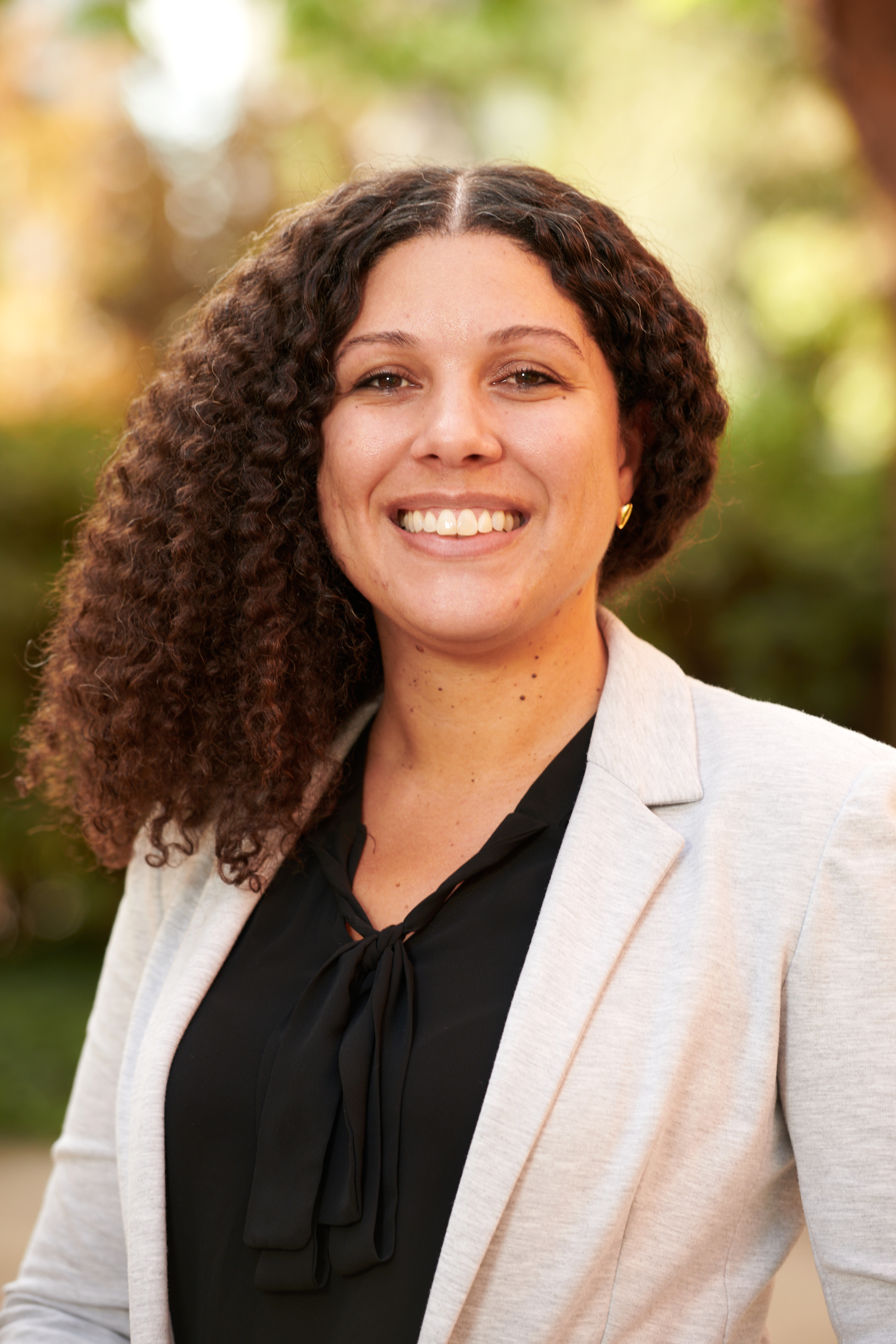
Email: kdeters@g.ucla.edu
Office: 1014 TLSB
Phone:
Website: https://deterslab.ibp.ucla.edu/
Biography
Dr. Kacie Deters earned her B.S. in Biology from the University of Alabama, Birmingham. She had little research experience and was curious if this was the path she wanted to pursue. After a year of figuring out what would make her happy, she ultimately completed her M.S. in Biology from CSU Dominguez Hills in 2012. Science turned into a passion Kacie wanted to explore more. In 2017, she earned her Ph.D. in Medical Neuroscience at the Indiana University School of Medicine focusing on genetic and imaging characteristics of tauopathies, including Alzheimer’s disease. Kacie then completed her first postdoc in 2021 at Stanford University with Dr. Elizabeth Mormino where she first began to explore ethnic and racial disparities existed in AD biomarkers. COVID hit, and Kacie decided to take a second postdoc, which she completed in 2022 at the University of California, San Diego in the Department of Neurosciences with Dr. Sarah Banks. While at UCSD, Kacie expanded her training to understand racial bias that exists in neuropsychological assessments. While at UCLA, Kacie’s lab will focus is on ethnic and racial disparities in predictors (genetic; neuroimaging; neuropsychological assessments; social/environmental factors) for cognitive decline and Alzheimer’s disease and related dementias in older adults, primarily from the Black community.
Research Interests
Although Black communities are plagued by health disparities, science has continued to center white populations in research. While research into ethnic and racial disparities studies has identified a number of population differences for disease risk factors, it is also important to understand within group heterogeneity in order to elucidate mechanisms underlying cognitive decline. Understanding the intersection of risk factors that drive cognitive decline and dementia in the Black population is critical to accurately assess, predict, and develop interventions for cognitive health. Thus, my goal is understanding the intersection and contributions of genetics and social/environmental factors to cognitive decline and AD. Research will utilize a number of techniques including genetic, neuroimaging, neuropsychological assessments, social and environmental factors, and fluid based biomarkers.
Education
B.S., Biology, University of Alabama, Birmingham 2008
M.S., Biology, California State University, Dominguez Hills 2012
Ph.D., Medical Neuroscience at the Indiana University School of Medicine 2017
Selected Publications
Deters KD, Napolioni V, Sperling RA, Greicius MD, Mayeux R, Hohman T, and Mormino EC. Amyloid PET imaging in self-identified non-Hispanic Blacks from the Anti-Amyloid in Asymptomatic Alzheimer’s Disease (A4) Study. Neurology. 2021. DOI: 10.1212/WNL.0000000000011599. Highlighted with an editorial.
Deters KD, Mormino EC, Yu L, Lutz M, Bennett DA, and Barnes LL. TOMM40-APOE haplotypes are associated with cognitive decline in non-demented Blacks. Alzheimer’s & Dementia. 2021. https://doi.org/10.1002/alz.12295
Avila JF, Rentería MA, Jones RN, Vonk JM, Turney I, Sol K, Nika Seblova N, Arias F, Hill-Jarrett T, Levy SA, Meyer O, Racine AM, Tom SE, Melrose RJ, Deters K, Medina LD, Carrión CI, Díaz-Santos M, Byrd DR, Chesebro A, Colon J, Igwe KC, Maas B, Brickman AM, Schupf N, Mayeux R, and Jennifer Manly J. Education Differentially Contributes to Cognitive Reserve Across Racial/Ethnic Groups. Alzheimer’s & Dementia. 2020. https://doi.org/10.1002/alz.12176
Winer JR, Deters KD, Kennedy G, Jin M, Goldstein-Piekarski A, Poston KL, Mormino EC. Short and long sleep duration are associated with distinct aging pathways. JAMA Neurol. 2021 Aug 30; doi: 10.1001/jamaneurol.2021.2876.
Pearl Quijada
Biography
Pearl received her BS in Biology from UC Riverside. To further explore interests in research and medicine, she pursued a Master’s degree in Cell and Molecular Biology at San Diego State University (SDSU) where she also served as a Human Anatomy Teaching Assistant for 3 years. At SDSU, she gained research technical expertise in cardiac pathophysiology and the development of cellular therapies to treat cardiac ischemic injury in the lab of Dr. Mark Sussman. After receiving her PhD from SDSU and UCSD, she began a postdoctoral fellowship under the mentorship of Dr. Eric Small at the University of Rochester where she studied novel mechanisms of epicardium-directed coronary vasculature formation during cardiac development and disease. Continuing her passion for teaching, she was awarded an Outstanding Postdoctoral Mentor Award during her postgraduate training. Transitioning to UCLA and returning to her family, community, and home in Los Angeles – her research lab will focus on evaluating novel cellular and paracrine signaling programs that stimulate angiogenesis in cardiac development, discoveries which may be used to promote cardiac remodeling and repair in the heart after myocardial infarction.
Research Interests
The epicardium is composed of a single cell layer that encapsulates the heart during embryogenesis. The epicardium also serves as a rich source of mesenchymal cells and growth factors that support both cardiomyocyte and coronary vasculature development. Although the function of the epicardium is invariably linked to the growth of the primitive coronary plexus, the cellular and molecular mechanisms that regulate cell autonomous and cell non-autonomous functions of the epicardium remain unclear. To facilitate the identification of the epicardium’s role in embryonic angiogenesis, our lab utilizes transgenic mouse models and single-cell transcriptomic sequencing to discover novel epicardium-directed guidance cues required for arterio-venous specification and maturation. As compared to the fetal heart, the adult myocardium is unable to undergo angiogenesis in response to ischemic injury, which ultimately leads to cardiac functional decline. By using information acquired from our studies during development, we are investigating the effects of secreted factors from the epicardium to promote angiogenesis and repair after ischemic injury in the adult heart.
Education
B.S., University of California, Riverside 2006
M.S., San Diego State University 2010
Ph.D., San Diego State University and University of California, San Diego 2015
Selected Publications
Quijada, P., Trembley, M.A., Small, E.M. The Role of Epicardium During Heart Development and Repair. Circ Res. Jan 31;126(3):377-394 (2020).
Quijada, P., Misra, A., Velasquez, L.S., Burke, R.M., Lighthouse, J.K., Mickelsen, D.M., Dirkx, R.A. Jr., Small, E.M. Pre-existing fibroblasts of epicardial origin are the primary source of pathological fibrosis in cardiac ischemia and aging. J Mol Cell Cardiol. 129:92-104 (2019).
Quijada, P., Salunga, H.T., Hariharan, N., Cubillo, J., El-Sayed, F., Moshref, M., Bala, K.M., Emathinger, J., De La Torre, A., Ormachea, L., Alvarez, R., Gude, N.A., Sussman, M.A. (2015) Cardiac stem cell hybrids enhance myocardial repair. Circ Res. 117(8):695-706 (2015).
Quijada, P., Hariharan, N., Cubillo,J., Bala, K.M., Ormachea, L., Bers, D.M., Sussman, M.A., Poizat, C. Nuclear Calcium/Calmodulin-Dependent Protein Kinase II Signaling Enhances Cardiac Progenitor Cell Survival and Cardiac Lineage Commitment. J Biol Chem. 290(42):25411-26 (2015).
Quijada, P., Toko, H., Fischer, K.M., Bailey, B., Reilly, P., Hunt, K.D., Gude, N.A., Avitabile, D., Sussman, M.A. Preservation of myocardial structure is enhanced by pim-1 engineering of bone marrow cells. Circ Res. 111(1):77-86 (2012).
Stephanie Correa
Stephanie Correa
Associate Professor
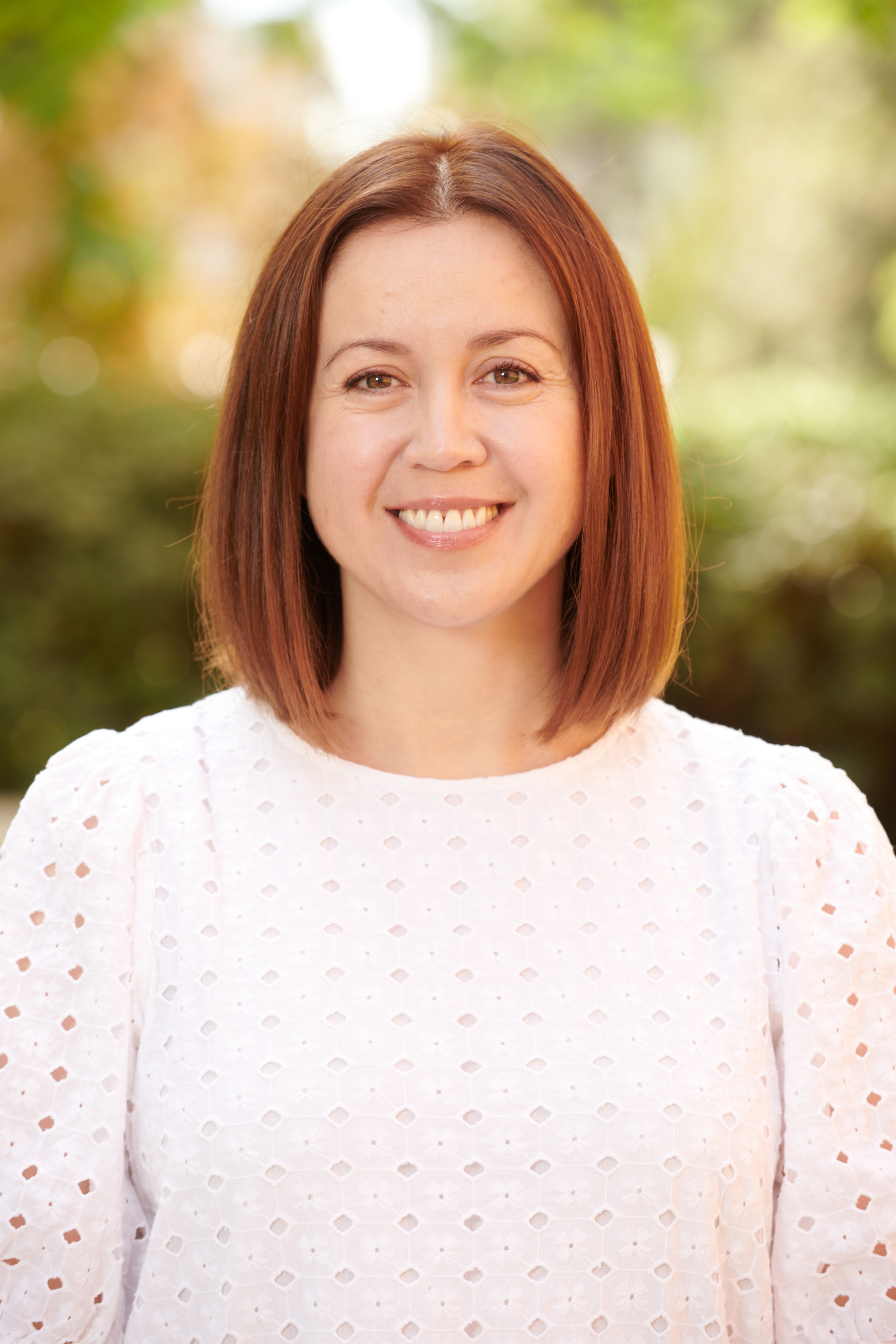
Email: stephaniecorrea@ucla.edu
Office: 2028 TLSB
Phone: (310) 825-1559
Website: http://www.correalab.org/
Biography
Stephanie Correa earned a BA in Biology from Pomona College and a PhD in Neurobiology and Behavior from Cornell University. Her dissertation research with Elizabeth Adkins-Regan and Patricia Johnson tested the effects of ovarian steroids on sex determination in birds. Her postdoctoral research at Boston University Medical Center identified strain differences in the testis determination pathway in mice. Postdoctoral research with Holly Ingraham at UCSF identified neurons in the hypothalamus that regulate physical activity and body weight in female mice. Research in her lab aims to understand sex differences in the regulation of temperature and energy balance. Before having twin daughters in 2016, Dr. Correa used to enjoy yoga and sleep.
Research Interests
The Correa lab is broadly interested in understanding how reproductive hormones affect temperature and energy balance. In women, the menopausal transition is associated with hot flashes and increased visceral body fat. Our research aims to understand how estrogens act on the hypothalamus to alter temperature homeostasis and metabolic health. These studies can help us better understand weight gain and hot flashes in postmenopausal women. To understand the mechanisms by which estrogen alters the homeostasis, we focus on the following broad questions: How does the brain regulate temperature and energy balance? How do homeostatic neural circuits differ between males and females? How are homeostatic circuits modulated by estrogens? We use genetically engineered mice and new viral tools to define the neurons that drive estrogen-responsive and sex-specific changes in energy balance. This approach allows us to dissect the effects of estrogen on distinct neuronal populations with spatial, molecular, and temporal specificity. Ultimately, we hope to identify avenues for developing targeted, non-hormonal treatments for hot flashes and obesity.
Education
B.A., Biology, Pomona College 2000
Ph.D., Neurobiology and Behavior, Cornell University 2007
Selected Publications
van Veen, J. E.*, Kammel, L. G.*, Bunda, P. C., Shum, M., Reid, M. S., Massa, M. G., Arneson, D. V., Park, J. W., Zhang, Z., Joseph, A. M., Hrncir, H., Liesa, M., Arnold, A. P., Yang, X., and Correa, S. M. Hypothalamic oestrogen receptor alpha establishes a sexually dimorphic regulatory node of energy expenditure. Nature Metabolism, 2: 351–363 (2020).
Kammel, L. G. and Correa, S. M. Selective sexual differentiation of neuron populations may contribute to sex-specific outputs of the ventromedial hypothalamus. Journal of Neuroendocrinology, 32: e12801 (2020).
Herber C. B.*, Krause, W. C.*, Wang, L., Bayrer, J. R., Li, A., Schmitz, M., Fields, A., Ford, B., Zhang, Z., Reid, M. S., Nomura, D. K., Nissenson, R. A., Correa S. M.#, and Ingraham, H. A.# Estrogen signaling in arcuate Kiss1 neurons suppresses a sex-dependent female circuit promoting dense strong bones. Nature Communications, 10: 163 (2019).
Correa, S. M., Newstrom, D. W., Warne J. P., Flandin, P., Cheung, C. C., Pierce, A. A., Lin-Moore, A. T., Xu, A. W., Rubenstein, J. L. and H. A. Ingraham, An Estrogen-Responsive Module in the Ventromedial Hypothalamus Selectively Drives Sex-Specific Activity in Females, Cell Reports, 10 : 62-74 (2015).
Correa, S. M., Washburn, L. L., Kahlon, R. S., Musson, M. C., Bouma, G. J., Eicher, E. M. and Albrecht, K. H., Sex Reversal in C57BL/6J XY Mice Caused by Increased Expression of Ovarian Genes and Insufficient Activation of the Testis Determining Pathway, PLoS Genetics, 8 (4): 1002569-1002588 (2012).
Correa, S. M.#, Horan, C. M., Johnson, P. A., Adkins-Regan, E., Copulatory Behaviors and Body Condition Predict Post-Mating Female Hormone Levels, Fertilization Success, and Primary Sex Ratios in Japanese Quail, Hormones and Behavior, 59 : 556-564 (2011).
Correa, S. M.#, Adkins-Regan, E., and Johnson, P. A., High Progesterone During Avian Meiosis Biases Sex Ratios Toward Females, Biology Letters, 1 : 215-218 (2005).
Claudio Villanueva
Claudio Villanueva
Associate Professor
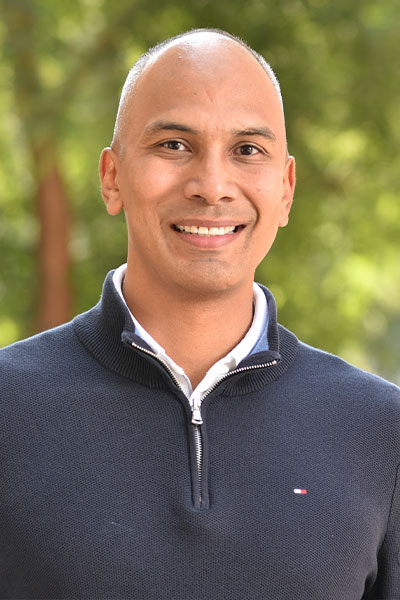
Email: cvillanueva@g.ucla.edu
Office: 27-200K CHS
Phone: (310) 825-4369
Website: https://sites.lifesci.ucla.edu/ibp-villanuevalab/
Biography
Professor Villanueva completed his undergraduate training at Cal State San Bernardino where he studied hormonal regulation of sodium uptake across the abdominal epithelium. He was fascinated by the way multicellular organisms’ sense and adapt to the surrounding environment. This early training sparked his interest in Integrative Physiology. As a Ph.D. student at UCSF, he trained at the Gladstone Institute of Cardiovascular Disease, where he studied lipid metabolism. He investigated the role of DGAT enzymes in fatty liver disease. His postdoc training was completed at UCLA, where he studied transcriptional mechanisms that regulate cellular programming of metabolism. He was recruited to the Department of Biochemistry at the University of Utah School of Medicine, and in 2019 joined the Department of Integrative Biology and Physiology at UCLA. His research aims to understand the metabolic adaptations required for cold adaptation in mammals.
Research Interests
Dr. Villanueva is interested in understanding how cells sense and control metabolism in response to stressors like temperature. The ability to maintain a constant body temperature despite a changing environment can lead to dramatic changes in energy expenditure. This requires an understanding of integrative metabolism and physiology. His lab will explore the molecular mechanisms that promote energy expenditure. He wants to understand how adipocytes regulate energy balance and how they communicate with the liver. These studies will provide opportunities for intervening in metabolic diseases that are associated with obesity.
Education
B.A., Biology, California State University, San Bernardino 2001
Ph.D., Lipid Biochemistry, University of California, San Francisco 2007
Selected Publications
Bensard CL, Wisidagama DR, Olson KA, Berg JA, Krah NM, Schell JC, Nowinski SM, Fogarty S, Bott AJ, Wei P, Dove KK, Tanner JM, Panic V, Cluntun A, Lettlova S, Earl CS, Namnath DF, Vázquez-Arreguín K, Villanueva CJ, Tantin D, Murtaugh LC, Evason KJ, Ducker GS, Thummel CS, Rutter J. “Regulation of Tumor Initiation by the Mitochondrial Pyruvate Carrier.”
Cell Metab. 31(2):284-300 (2020).
Anthony RP Verkerke, Patrick J Ferrara, Chien-Te Lin, Jordan M Johnson, Terence E Ryan, J Alan Maschek, Hiroaki Eshima, Christopher W Paran, Brenton T Laing, Piyarat Siripoksup, Trevor S Tippetts, Edward J Wentzler, Hu Huang, Espen E Spangenburg, Jeffrey J Brault, Claudio J Villanueva, Scott A Summers, William L Holland, James E Cox, Dennis E Vance, P Darrell Neufer, Katsuhiko Funai., “Phospholipid methylation regulates muscle metabolic rate through Ca 2+ transport. efficiency”, Nature Metabolism, 1 : 876-885 (2019) .
Charisse Petersen, Rickesha Bell, Kendra A Klag, Soh-Hyun Lee, Raymond Soto, Arevik Ghazaryan, Kaitlin Buhrke, H Atakan Ekiz, Kyla S Ost, Sihem Boudina, Ryan M O’Connell, James E Cox, Claudio J Villanueva, W Zac Stephens, June L Round., “T cell-mediated regulation of the microbiota protects against obesity”, Science, 365 (6451): (2019) .
Gisela Geoghegan, Judith Simcox, Marcus M Seldin, Timothy J Parnell, Chris Stubben, Steven Just, Lori Begaye, Aldons J Lusis, Claudio J Villanueva., “Targeted deletion of Tcf7l2 in adipocytes promotes adipocyte hypertrophy and impaired glucose metabolism”, Molecular Metabolism, 24 : 44-63 (2019).
Stephanie Pearson, Anne Loft, Prashant Rahbhandari, Judith Simcox, Sanghoon Lee, Peter Tontonoz, Susanne Mandrup, Claudio J Villanueva., “Loss of TLE3 promotes the mitochondrial program in beige adipocytes and improves glucose metabolism”, Genes & Development, (2019).
Marah C Runtsch, Morgan C Nelson, Soh-Hyun Lee, Warren Voth, Margaret Alexander, Ruozhen Hu, Jared Wallace, Charisse Petersen, Vanja Panic, Claudio J Villanueva, Kimberley J Evason, Kaylyn M Bauer, Timothy Mosbruger, Sihem Boudina, Mary Bronner, June L Round, Micah J Drummond, Ryan M O’Connell., “Anti-inflammatory microRNA-146a protects mice from diet-induced metabolic disease”, PLOS Genetics, 15 (2): (2019).
Gilles Storelli, Hyuck-Jin Nam, Judith Simcox, Claudio J Villanueva, Carl S Thummel., “Drosophila HNF4 directs a switch in lipid metabolism that supports the transition to adulthood”, Developmental Cell, 48 (2): 200-214 (2019).
Simon T Bond, Sarah C Moody, Yingying Liu, Mete Civelek, Claudio J Villanueva, Paul Gregorevic, Bronwyn A Kingwell, Andrea L Hevener, Aldons J Lusis, Darren C Henstridge, Anna C Calkin, Brian G Drew., “The E3 ligase MARCH5 is a PPARγ target gene that regulates mitochondria and metabolism in adipocytes”, American Journal of Physiology-Endocrinology and Metabolism, 316 (2): E293-E304 (2018).
Santhosh Karanth, JD Adams, Maria de los Angeles Serrano, Ezekiel B Quittner-Strom, Judith Simcox, Claudio J Villanueva, Lale Ozcan, William L Holland, H Joseph Yost, Adrian Vella, Amnon Schlegel., “A Hepatocyte FOXN3-α Cell Glucagon Axis Regulates Fasting Glucose”, Cell Reports, 24 (2): 312-319 (2018).
Judith Simcox, Gisela Geoghegan, John Alan Maschek, Claire L Bensard, Marzia Pasquali, Ren Miao, Sanghoon Lee, Lei Jiang, Ian Huck, Erin E Kershaw, Anthony J Donato, Udayan Apte, Nicola Longo, Jared Rutter, Renate Schreiber, Rudolf Zechner, James Cox, Claudio J Villanueva, “Global Analysis of Plasma Lipids Identifies Liver-Derived Acylcarnitines as a Fuel Source for Brown Fat Thermogenesis”, Cell Metabolism, 26 (3): 509-522 (2017) .
David Walker
David Walker
Professor
Vice Chair of Academic Personnel
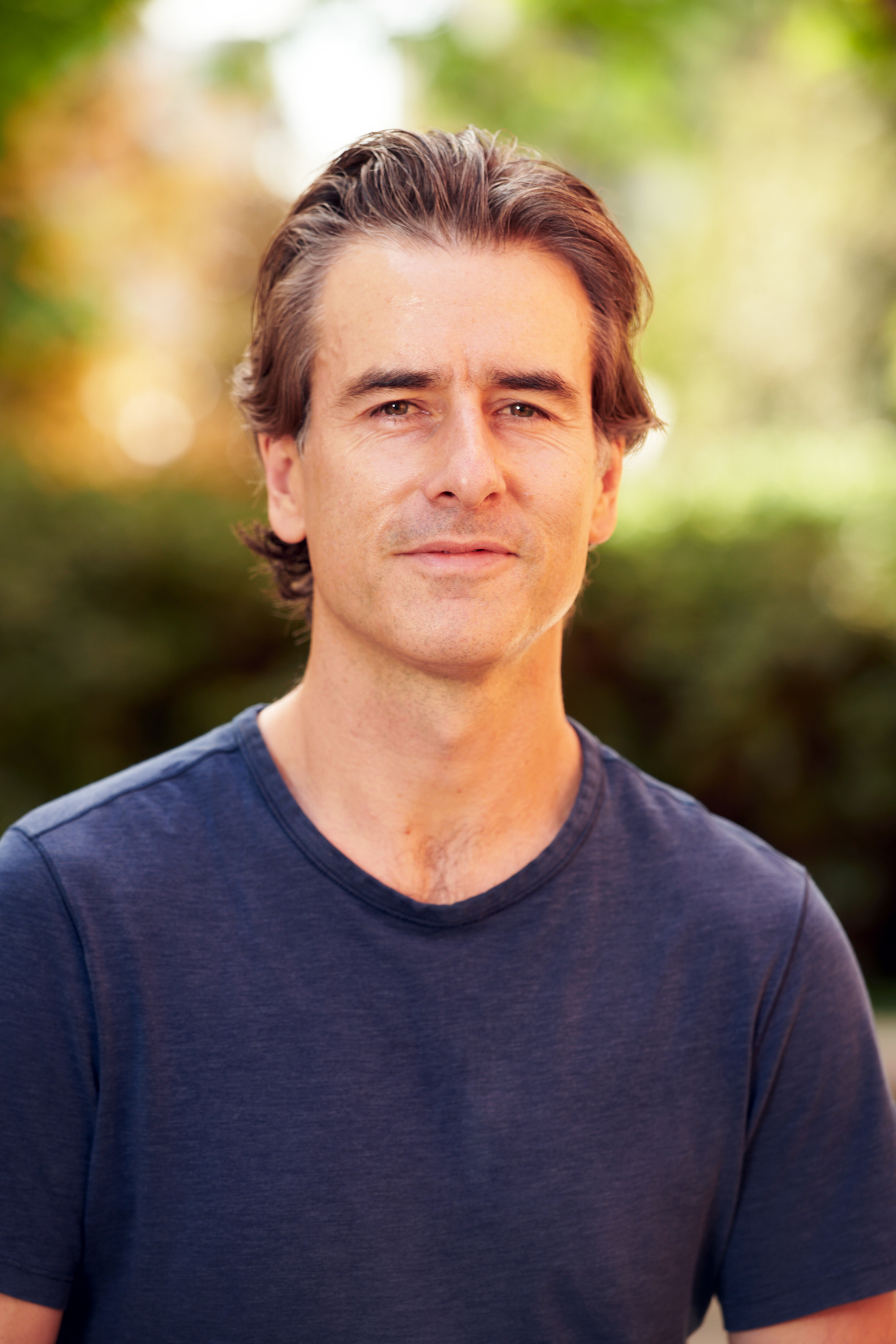
Email: davidwalker@ucla.edu
Office: 2018 TLSB
Phone: (310) 825-7179
Biography
I completed my undergraduate degree in Genetics at Queen’s University of Belfast, Northern Ireland. I then went on to complete both Master’s and Ph.D. degrees at the University of Manchester, UK. I carried out postdoctoral work at the California Institute of Technology (Caltech), where I received training in Drosophila genetics in the laboratory of Seymour Benzer and training in mitochondrial biology in the laboratory of Giuseppe Attardi. I established my independent research group at UCLA in 2007.
Research Interests
The mechanisms that cause the deterioration of cellular functions during the aging process remain poorly understood. Our lab is using the powerful genetics of the fruit fly Drosophila melanogaster to better understand the molecular and cellular mechanisms of aging. Drosophila has proven to be an invaluable resource for understanding many molecular and cellular mechanisms of human disease, powered by versatile gene discovery methods and a biology that has much in common with that of humans. The long-term aim of this research is to provide novel therapeutic targets to counteract age-related human diseases.
Education
B.S., Genetics, Queen’s University Belfast 1995
MRes, Molecular Biology, University of Manchester 1996
Ph.D., Genetics, University of Manchester 2000
Selected Publications
Schmid, E.T., Pyo, JH. & Walker, D.W. Neuronal induction of BNIP3-mediated mitophagy slows systemic aging in Drosophila. Nature Aging 2, 494–507 (2022).
Aparicio, R., Schmid, E.T. & Walker, D.W. Gut mitochondrial defects drive neurodegeneration. Nature Aging 2, 277–279 (2022).
Aparicio, R., Rana, A., Walker, D.W., “Upregulation of the Autophagy Adaptor p62/SQSTM1 Prolongs Health and Lifespan in Middle-Aged Drosophila”, Cell Reports, 28 : 1029-1040 (2019).
Schinaman, J.S., Rana, A., Ja, W.W., Clark, R.I., & Walker, D.W., “Rapamycin modulates tissue aging and lifespan independently of the gut microbiota in Drosophila”, Scientific Reports, 9 (1): 7824- (2019).
Salazar A.M., Resnik-Docampo M., Ulgherait, M., Clark R.I., Shirasu-Hiza M., Jones, D.L., Walker, D.W., “Intestinal Snakeskin Limits Microbial Dysbiosis during Aging and Promotes Longevity”, iScience, 9 : 229-243 (2018).
Hansen M., Rubinsztein, D.C., Walker, D.W., “Autophagy as a promoter of longevity: insights from model organisms”, Nature Rev Mol Cell Biol, 19 (9): 579-593 (2018).
Rana A, Oliveira MP, Khamoui AV, Aparicio R, Rera M, Rossiter HB, Walker DW, ” Promoting Drp1-mediated mitochondrial fission in midlife prolongs healthy lifespan of Drosophila melanogaster”, Nature Communications, 8 (1): 448- (2017).
Resnik-Docampo M, Koehler CL, Clark RI, Schinaman JM, Sauer V, Wong DM, Lewis S, D’Alterio C, Walker DW, Jones DL, “Tricellular junctions regulate intestinal stem cell behaviour to maintain homeostasis”, Nature Cell Biology, 19 (1): 52-59 (2017).
Clark RI, Salazar A, Yamada R, Fitz-Gibbon S, Morselli M, Alcaraz J, Rana A, Rera M, Pellegrini M, Ja WW, Walker DW., “Distinct Shifts in Microbiota Composition during Drosophila Aging Impair Intestinal Function and Drive Mortality”, Cell Reports, 12 (10): 1656-1667 (2015) . Ulgherait M., Rana A., Rera M., Graniel J., Walker D.W., “AMPK Modulates Tissue and Organismal Aging in a Non-Cell-Autonomous Manner”, Cell Reports, 8 (6): 1767-1780 (2014).
Rana A, Rera M, Walker D.W., “Parkin overexpression during aging reduces proteotoxicity, alters mitochondrial dynamics, and extends lifespan”, Proc Natl Acad Sci USA, 110 : 8638-8643 (2013).
Rera, M, Clark, R.I., Walker D.W., “Intestinal barrier dysfunction links metabolic and inflammatory markers of aging to death in Drosophila”, Proc Natl Acad Sci USA, 109 (52): 21528-21533 (2012).
Stephanie White
Stephanie White
Professor
Director of Undergraduate Neuroscience Interdepartmental Program (UNSIDP)
William Scheibel Endowed Chair in Neuroscience
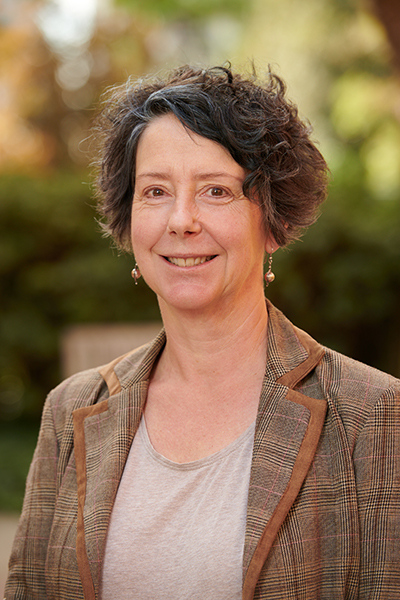
Email: sawhite@ucla.edu
Office: 1028 TLSB
Phone: (310) 794-1888
Website: http://www.physci.ucla.edu/research/white
Research Interests
Our capacity for language is near or at the essence of what makes us human. How this trait evolved is puzzling given that non-human primates can’t learn their vocalizations. (In the wild, adult chimps sound much like baby chimps but with deeper voices.) Precursor Homo groups speaking precursors to language no longer exist. My research group focuses on one aspect of language: the ability of youngsters to listen to and compare their own vocalizations to those of adults and thereby move from babbling to pronouncing interpretable sounds. For this we study songbirds and ask how the puzzle pieces of their brains fit together to accomplish vocal mimicry. We currently focus on a molecule known as FoxP2 that, when disrupted in humans or birds, disrupts speech or song, respectively. FoxP2 connects to the network of molecules that together enable learned vocal communication. We are investigating the functional role of FoxP2 in song and at synapses in the underlying control circuitry. We are also investigating the network of molecules downstream of FOXP2 and their role in disorders of speech including in autism.
Education
B.S., Biopsychology, Connecticut College
Ph.D., Neuroscience, Stanford University
Selected Publications
Fraley ER, Burkett ZD, Day NF, Schwartz BA, Phelps PE & White SA, “Mice with Dab1 or Vldlr insufficiency exhibit abnormal neonatal vocalization patterns”, Scientific Reports, 6 : 25807- (2016) .
Berg JM, Lee C, Chen L, Galvan L, Cepeda C, Chen JY, Penagarkano O, Stein JL, Li A, Oguro-Ando A, Miller JA, Vahisht AA, Starks ME, Kite EP, Al-Sharif NB, Burkett ZD, White SA, Fears SC, Levine MS, Wohlschlegel JA & Geschwind DG, “JAKMIP1 links regulation of neuronal protein translation to autism”, Neuron, 88 : 1173-1191 (2015) .
*Miller JE, *Hafzalla G, Burkett ZD, Fox CM & White SA, “Dopamine depletion in basal ganglia song nucleus reduces vocal variability in adult male zebra finches”, Physiological Reports, 3 : e12599- (2015) .
Hara E, Perez J, Whitney O, Chen Q, White SA & Wright T, “Neural FoxP2 and FoxP1 expression in the budgerigar, an avian species with adult vocal learning”, Behavioral Brain Research, 283 : 22-29 (2015) .
Heston JB & White SA, “Behavior-linked FoxP2 regulation enables zebra finch vocal learning”, Journal of Neuroscience, 35 : 2885-2894 (2015) .
Whitney O, Voyles T, Hara E, Chen Q, White SA & Wright T, “Differential FoxP2 and FoxP1 expression in a vocal learning nucleus of the developing budgerigar”, Developmental Neurobiology, 75 : 778-790 (2015) .
Hilliard AT*, Miller JE*, Fraley ER, Horvath S & White SA, “Molecular microcircuitry underlies the functional specification of a basal ganglia circuit dedicated to vocal learning”, Neuron, 73 : 537-552 (2012) .
White, S.A., “Genes and vocal learning”, Brain and Language, 115 : 21-28 (2011) .
Panaitof, S.C., Abrahams, B.S., Dong, H., Geschwind, D.H. and White, S.A., “Language-related Cntnap2 gene is differentially expressed in sexually dimorphic nuclei essential for vocal learning in songbirds”, Journal of Comparative Neurology, 5 : 1995-2018 (2010) .
Miller, J.E., Hilliard, A.T. and White, S.A., “Song practice promotes acute vocal variability during sensorimotor learning”, PLoS ONE, 5 : e8592- (2010) .
Roy Wollman
Roy Wollman
Professor
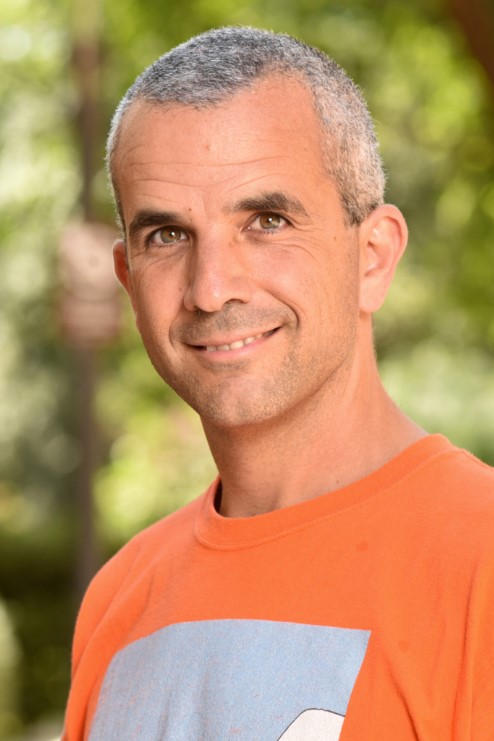
Email: rwollman@ucla.edu
Office: 540 Boyer Hall
Phone: (855) 810-0905
Website: wollmanlab.ucla.edu
Biography
Dr. Wollman’s training was highly interdisciplinary including statistics, biophysics, experimental biology. He is passionate about science, mentoring, and kite flying.
Research Interests
The Wollman lab studies information processing in intracellular and intercellular signaling networks in the presence of a high degree of single-cell variability. A particular focus is on the connection between gene expression and signaling dynamics at the single cell level.
Education
B.Sc, Biology, Tel Aviv University 2003
B.Sc, Statistics And Operation Research, Tel Aviv University 2003
Ph.D., Cell and Developmental Biology, University of California, Davis 2008
Selected Publications
Zhang T, Pilko A, Wollman R (2020) ‘Loci specific epigenetic drug sensitivity.’ Nucleic Acids Res, doi: 10.1093/nar/gkaa210 .PMID: 32246716 Foreman R, Wollman R (2020) ‘Mammalian gene expression variability is explained by underlying cell state.’ Mol Syst Biol, 16 (2): e9146. PMID: 32043799 Handly LN, Wollman R, “Wound-induced Ca2+ wave propagates through a simple release and diffusion mechanism”, Molecular Biology of the Cell, 28 (11): 1457-1466 (2017) . Yao J, Pilko A, Wollman R., “Distinct cellular states determine calcium signaling response”, Molecular Systems Biology, 12 (12): 894-904 (2016) . Handly LN, Pilko A, Wollman R (2015) ‘Paracrine communication maximizes cellular response fidelity in wound signaling.’ Elife, 4 (): e09652. PMID: 26448485 Selimkhanov J, Taylor B, Yao J, Pilko A, Albeck J, Hoffmann A, Tsimring L, Wollman R (2014) ‘Accurate information transmission through dynamic biochemical signaling networks.’ Science, 346 (6215): 1370-3. PMID: 25504722
Xinshu Grace Xiao
Xinshu Grace Xiao
Professor
Director of Bioinformatics Interdepartmental Ph.D. Program
Maria Rowena Endowed Chair in Biological Sciences

Email: gxxiao@ucla.edu
Office: 2000E TLSB
Phone: (310) 206-6522
Website: https://www.xiao-lab.org/
Biography
Dr. Xinshu (Grace) Xiao received her B.S. degree at Tsinghua University, Beijing, China. She then went to the Massachusetts Institute of Technology (MIT) for graduate studies. After receiving her Ph.D degree in the Division of Health Sciences and Technology (HST), a joint program by MIT and Harvard Medical School, Dr. Xiao continued at MIT for postdoctoral training in the Department of Biology. In 2008, Dr. Xiao joined the faculty at the University of California, Los Angeles. She is now the Maria R. Ross Endowed Professor of the Department of Integrative Biology and Physiology. She also serves as the Director of the Bioinformatics Interdepartmental Program.
Research Interests
Research in the Xiao lab aims to better understand transcriptome complexity in health and disease. A major surprise resulted from the Human Genome Project was that humans, even though as an apparently much complex organism with 100 trillion cells, have only 25,000 to 30,000 genes. In contrast, the roundworm, an organism with 960 cells, has ~19,000 genes. The number of genes does not scale proportionally with biological sophistication. Instead, the transcriptome (the collection of RNA molecules expressed from genes) in higher organisms is closely regulated such that one gene may produce different transcript isoforms in a cell type and developmental stage-specific manner. The Xiao lab studies transcriptome complexity focusing on RNA splicing, RNA modification and other post-transcriptional mechanisms. With both a computational (dry) lab and an experimental (wet) lab, they develop new bioinformatic methods and experimental systems to understand the regulation and function of transcriptome complexity, and apply these methods to neuropsychiatric disorders and cancer. The lab makes extensive use of second and third generation sequencing technologies in bulk tissues and single cells to drive methodology developments and biological discoveries.
Education
B.S., Tsingua University 1998
M.S., Biomedical/Mechanical Engineering, Massachusetts Institute of Technology 2000
Ph.D., Biomedical Engineering, Massachusetts Institute of Technology, Harvard Medical School 2004
Selected Publications
Tran SS, Zhou Q, Xiao X. Statistical inference of differential RNA-editing sites from RNA-sequencing data by hierarchical modeling. Bioinformatics, 36(9):2796-2804 (2020).
Cass AA, Xiao X. mountainClimber identifies alternative transcription start and polyadenylation sites in RNA-seq. Cell Systems, 9(4):393-400 (2019).
Tran SS, Jun HI, Bahn JH, Azghadi A, Ramaswami G, Van Nostrand EL, Nguyen TB, Hsiao YE, Lee C, Pratt GA, Martínez-Cerdeño V, Hagerman RJ, Yeo GW, Geschwind DH, Xiao X., “Widespread RNA editing dysregulation in brains from autistic individuals”, Nature Neuroscience, 22 (1): 25-36 (2019) .
Arefeen A, Xiao X, Jiang T., “DeepPASTA: deep neural network based polyadenylation site analysis”, Bioinformatics, 1-9 (2019) .
The Extracellular RNA Communication Consortium, “Establishing Foundational Knowledge and Technologies for Extracellular RNA Research”, Cell, 177 (2): 231-242 (2019) .
Yang EW, Bahn JH, Hsiao EY, Tan BX, Sun Y, Fu T, Zhou B, Van Nostrand EL, Pratt GA, Freese P, Wei X, Quinones-Valdez G, Urban AE, Graveley BR, Burge CB, Yeo GW, Xiao X.Allele-specific binding of RNA-binding proteins reveals functional genetic variants in the RNA., “Allele-specific binding of RNA-binding proteins reveals functional genetic variants in the RNA”, Nature Communications, 10 (1): 1-15 (2019) .
Quinones-Valdez G, Tran SS, Jun HI, Bahn JH, Yang EW, Zhan L, Brümmer A, Wei X, Van Nostrand EL, Pratt GA, Yeo GW, Graveley BR, Xiao X., “Regulation of RNA editing by RNA-binding proteins in human cells”, Communications Biology, 2 (19): 1-14 (2019) .
Cheung R, Insigne KD, Yao D, Burghard CP, Wang J, Hsiao YE, Jones EM, Goodman DB, Xiao X, Kosuri S., “A Multiplexed Assay for Exon Recognition Reveals that an Unappreciated Fraction of Rare Genetic Variants Cause Large-Effect Splicing Disruptions”, Molecular Cell, 73 (1): 183-194 (2019) .
Hsiao YE, Bahn JH, Yang Y, Lin X, Tran S, Yang EW, Quinones-Valdez G, Xiao X., “RNA editing in nascent RNA affects pre-mRNA splicing”, Genome Research, 28 (6): 812-823 (2018) .
Burkett ZD, Day NF, Kimball TH, Aamodt CM, Heston JB, Hilliard AT, Xiao X, White SA, “FoxP2 isoforms delineate spatiotemporal transcriptional networks for vocal learning in the zebra finch”, eLife, 23 (7): 1-35 (2018) .
Xia Yang
Xia Yang
Professor
Vice Chair, Molecular, Cellular and Integrative Physiology (MCIP) Interdepartmental Ph.D. Program and Computational and Systems Biology (CaSB) Interdepartmental Program

Email: xyang123@ucla.edu
Office: 2000C TLSB
Phone: (310) 206-1812
Website: https://yanglab.ibp.ucla.edu
Biography
Dr. Xia Yang received her Ph.D. in Molecular Genetics and Bioinformatics from Georgia State University and had postdoctoral training in Systems Genetics at UCLA. She was Senior Research Scientist at Rosetta Inpharmatics/Merck & Co. and Director of Systems Biology at Sage Bionetworks prior to returning to UCLA as a faculty member.
Research Interests
Our research focuses on developing and applying multitissue multiomics systems biology approaches to dissect the molecular networks underlying diverse complex diseases, ranging from cardiometabolic diseases to neurodegenerative and neurological disorders, and utilize the systems level networks to guide precision medicine. Through integration of genetic, transcriptional, epigenomic, proteomic, gut microbiota, and phenotypic data from human and rodent populations, we investigate how complex interactions between genetic and environmental risk factors perturb tissue- and cell-specific gene networks which in turn induce variations in disease susceptibility. Subsequently, we use the causal molecular networks of diseases as the basis for therapeutic target identification and biomarker discovery.
Education
B.S., Pharmacy, Shandong University 1993
Ph.D., Molecular Genetics/Bioinformatics, Georgia State University 2003
Selected Publications
Yang X. “Multi-tissue Multi-omics Systems Biology to Dissect Complex Diseases”. Trends in Molecular Medicine, 2020.
Liu W, Venugopal S, Majid S, Ahn IS, Diamante G, Hong J, Yang X*, Chandler SH*. “Single-cell RNA-seq Analysis of the Brainstem of Mutant SOD1 mice Reveals Perturbed Cell Types and Pathways of Amyotrophic Lateral Sclerosis”. Neurobiology of Disease, 141: 104877, 2020.
Rajbhandari P+, Arneson D+, Feng AC, Ahn IS, Diamante G, Zaghari N, Thomas BJ, Vergnes L, Lee SD, Reue K, Smale ST, Yang X, Tontonoz P. “Single Cell Analysis Reveals Immune Cell-Adipocyte Crosstalk Regulating the Transcription of Thermogenic Adipocytes”. eLife 8:e49501, 2019.
Zhang G, Byun HR, Ying Z, Blencowe M, Zhao Y, Hong J, Shu L, Gomez-Pinilla F, Yang X. “Differential Metabolic and Multi-tissue Transcriptomic Responses to Fructose Consumption among Genetically Diverse Mice”. BBA – Molecular Basis of Disease. 1866: 165569, 2020.
Shu L, Meng Q, Tsai B, Diamante G, Chen Y, Mikhail A, Luk H, Ritz B, Allard P, Yang X, “Prenatal Bisphenol A Exposure in Mice Induces Multi-tissue Multi-omics Disruptions Linking to Cardiometabolic Disorders”, Endocrinology, 160 : 409-429, 2019.
Arneson D, Zhuang Y, Byun HR, Ahn IS, Ying Z, Zhang G, Gomez-Pinilla F, Yang X, “Single Cell Molecular Alterations Reveal Pathogenesis and Targets of Concussive Brain Injury”, Nature Communications, 9 : 3894, 2018.
Emilsson V, llkov M, Lamb JR, Finkel N, Gudmundsson EF, Pitts R, Hoover H, Jennings LL, Horman SR, Aspelund T, Shu L, Trifonov V, Gudmundsdottir V, Sigurdsson S, Manolescu A, Zhu J, Lesley SA, To J, Zhang J, Harris TB, Launer LJ, Zhang B, Eiriksdottir G, Yang X, Smith AV, Orth AP, Gudnason V, “Coregulatory Networks of Human Serum Proteins Link Genetics to Disease”, Science, 361 : 769-773, 2018.
Kurt Z, Barrere-Cain R, LaGuardia J, Mehrabian JM, Pan C, Hui ST, Norheim F, Zhou Z, Hasin Y, Lusis AJ, Yang X, “Tissue-specific Pathways and Networks Underlying Sexual Dimorphism in Non-Alcoholic Fatty Liver Disease”, Biology of Sex Differences, 9 : 46- (2018) .
Krishnan KC, Kurt Z, Barrere-Cain R, Sabir S, Das A, Floyd R, Vergnes L, Zhao Y, Che N, Charugundla S, Qi H, Zhou Z, Meng Y, Pan C, Seldin MM, Norheim F, Hui S, Reue K, Lusis, AJ, Yang X., “Integration of Multi-omics Data from Mouse Diversity Panel Highlights Mitochondrial Dysfunction in Non-Alcoholic Fatty Liver Disease”, Cell Systems, 6 : 1-13, 2018.
Shu L, Chen KHK, Zhang G, Huan T, Kurt Z, Zhao Y, Codoni V, Tregouet DA, Yang J, Wilson JG, Luo X, Levy D, Lusis AJ, Liu S, Yang X, “Shared Genetic Regulatory Networks for Cardiovascular Disease and Type 2 Diabetes in Multi-ethnic Populations”, PLOS Genetics, 13 (9): e1007040, 2017.


